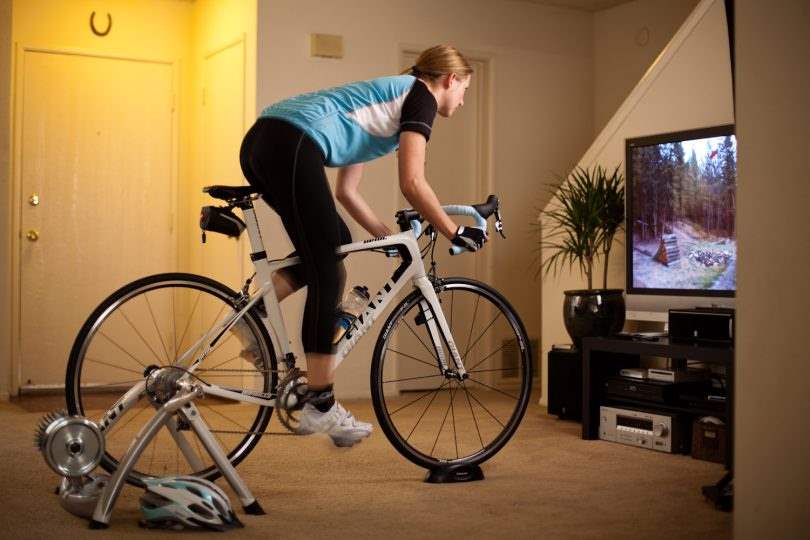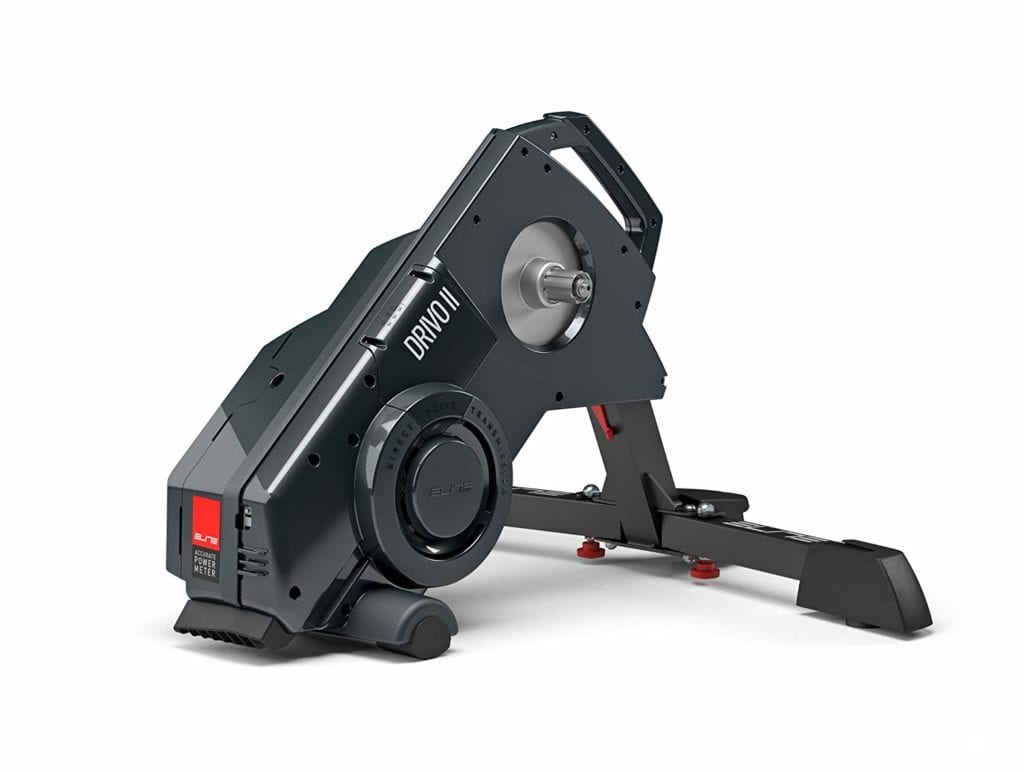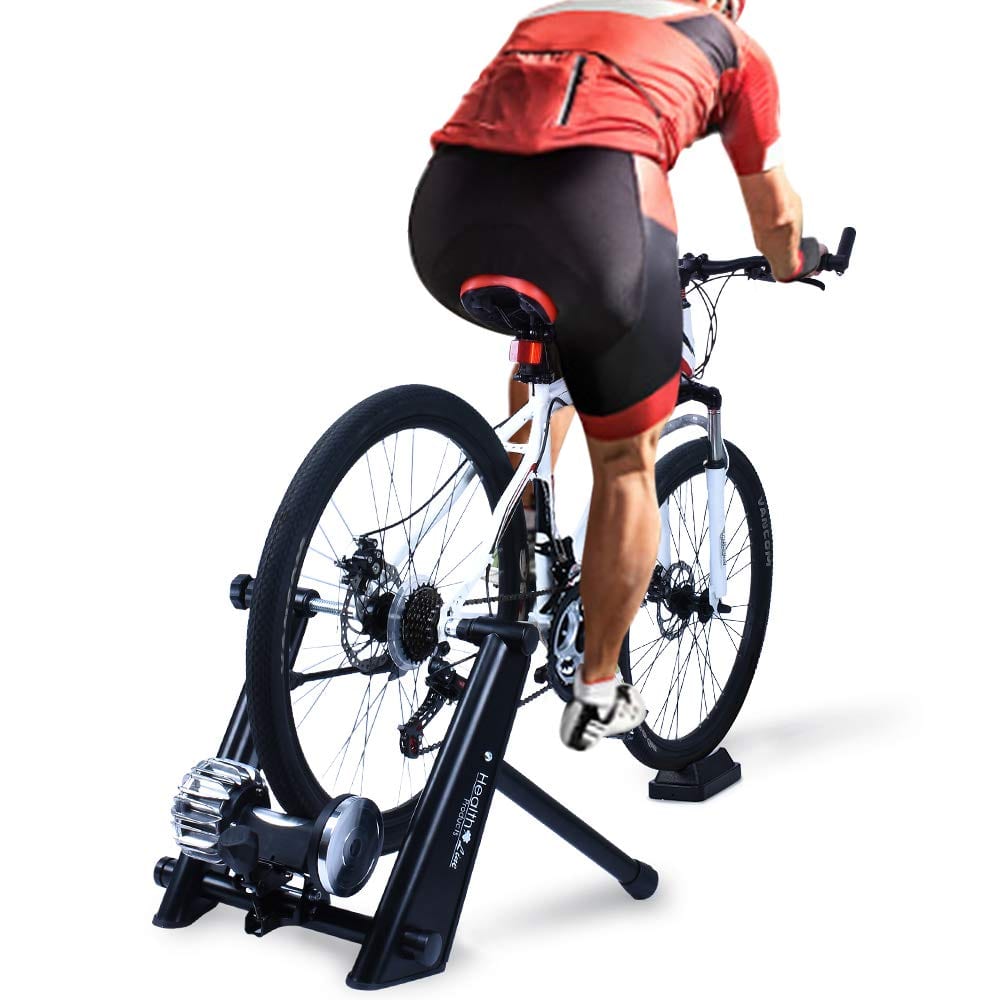Table of Contents
When thinking about a bike “trainer,” it’s hard not to think about someone yelling boisterously at you as you count down the reps. While bike trainers have widely varying price points, they all basically do the same thing; albeit in different ways with different levels of comfort.
If you’re a year-round cyclist, a bike or turbo trainer (another term for bike trainers) should be an essential part of your cycling toolkit; especially if you live in a part of the world where your winters are cold, dark and long. In light-deprived environments, a bike trainer allows the cyclist to remain active when forced inside for prolonged periods of the year. And if it’s too hot in the summer, your bike trainer will allow you to bike in an air conditioned room with a TV. If any of this has gotten your attention, read on. We think that you’ll be even more convinced these deserve some space in your extra room when you learn more about the interactive, virtual cycling features available with many bike trainers. This is where the newest bike trainers outperform the old-style equipment that many of us still associate with a bicycle propped up on a few rollers. Before diving into our recommended list of bike trainers, feel free to read more about the different types of bike trainers and how you set them up and connect with with virtual cycling software.
The Cost of a Bike Trainer
Since your bike trainer is designed to work with your favorite bike, you really won’t need to spend a lot of money to add a bike trainer to your home gym. And if you don’t have a home gym, a bike trainer can be moved from the closet to your living room or basement with very little effort. In terms of cost, a lower end bike trainer will run you about $89 and the moderately-priced models cost up to $263 (see the highly ranked Magene T100, which represents a good “middle of the road” option). If you’re truly committed to frequent use of your bike trainer–and want the smoothest ride possible–you should check out the TacX Flux 2 trainer. These will set you back almost $1,000 but they integrate well with your bike in the form of a cassette built right into the bike trainer (see photo below). While there are some models that retail for under $89, we don’t recommend going too cheap. With bike trainers, you truly get what you pay for and the lower-cost options typically don’t last as long or perform as well.

What do I need to make it work?
There are several things that you’ll need before you can start your indoor training regimen:
- Your bicycle
- Your bike trainer
- Sufficient space
- Fan or A/C, light, TV (nice to have)
- Your significant other’s permission to drop some money and take over part of a room 🙂
- A good water bottle to keep you hydrated, some earbuds that double for outdoor use and
Before you purchase a bike trainer, we recommend you watch the video below to get a sense of how you set up your bike with a bike trainer. We also provide some helpful tips about sizing your bicycle and some additional suggestions for preparing your bicycle for the cold, winter months. There is very little to setting up most bike trainers, but it’s helpful to see how you connect your bike to the trainer if you’ve never done this before. If any part of this seems complicated, consider asking a family member for help or visiting your local cycling store. Before you make a purchase, it’s important that you’re familiar with the different types of bike trainers and how each type differs by price and feature set.
Three Types of Indoor Bike Trainers
Although there are many different types of bike trainers, most can be categorized into three basic models.
Direct-Drive Trainers
Direct-drive trainers attach to your bike’s rear dropouts, replacing your wheel. Unlike other models that simply turn a wheel, direct-drive bike trainers connect directly to a resistance unit. The TacX is a popular example of a direct-drive trainer. These trainers are easily-identified because they require a cassette. They are typically the most expensive model, but they are also the most efficient and most comfortable units.
Friction Trainers
Friction trainers depend on a small roller against the rear wheel, which utilizes magnetic or fluid resistance. These units tend to be lighter and more portable than direct drive trainers, but they are usually noisier and less comfortable. The lack of direct-drive technology will save you a few dollars since they are almost half as much as a direct-drive model.
Rollers
Rollers are the most basic type of bike trailer, but they are also the less comfortable or fluid since your bike is essentially propped up on three rollers. Resistance is a little more difficult to manage since, but the motion required to drive these units will help you improve our pedaling technique over time.
Smart Trainers
Smart trainers communicate wirelessly with a smart phone training app or virtual riding system. Zwift is one of the more popular apps or virtual systems and there are many different many different manufacturers who integrate their bike trainers with Zwift via Bluetooth. The CycleOps H2 is one of the newer smart trainers (see below) that integrates with Zwift or Rouvy.
Although there are numerous smart systems in play, Zwift is currently one of the more popular virtual training systems. In short, you pay a subscription (currently $14.99 per month) and then log in to a virtual cycling world where you can go on virtual rides, bike with other virtual cyclists and structure your riding using Zwift’s training plan(s). How do you connect your bike trainer to Zwift? You basically pair Zwift with your classic trainer or rollers by pairing a speed or cadence sensor with the program’s built-in zPower program. It’s important to note that some trainers are only partially “smart” or integrated with virtual intelligence. They measure power or resistance and send that data wirelessly to your computer , phone or tablet. However, their resistance can’t be viewed and manipulated by software.
For a fully smart, controllable trainer, you’ll want ANT+ FE-C capability. ANT+ was developed by Garmin and is in short a wireless communication protocol. FE-C stands for Fitness Equipment Control. FE-C controls fitness equipment such as turbo trainers using ANT+ as the communication bridge between the trainer and the software or virtual controls. You can also find ANT+ adapters that work with Zwift on Amazon.
With analog data being pushed from your trainer over ANT+/FE-C, you can spice up your rides with virtual cycling words, competitions and a record of where you biked and how well you biked during prior cycling trips. And not to be forgotten, you can do all of this while cycling elbow to elbow (virtually of course) with other users around the world.
Other Things to Consider Before Buying a Bike Trainer
Compatibility: Because trainer axle attachments are variable, check whether a trainer you’re interested in offers different attachment options. Some trainers include them as part of the original product, but other companies make you buy them separately.
Noise: Most higher-end trainers are quiet. Generally speaking, friction trainers are louder than direct drive trainers. If this is a primary issue for you, make sure you check the return policy on any unit you buy and put your trainer through the paces right away to make sure you’re comfortable with the noise generated by the fan, flywheel or other points of friction.
Stability: Trainer crashes are rare, but not unheard of when you’re going cross-eyed trying to beat your PR on that workout. Typically, the broader the base, the more stable the trainer will be. Some trainers—CycleOps’ PowerBeam Pro, for example—have a leveling feature for uneven surfaces.
With this information in mind, here are some of our favorite indoor bike trainers:
1. Wahoo Kicker
Purchase at Amazon

For the cyclist who wants the ultimate in smart trainers with just about every feature imaginable, the Wahoo Kickr is an excellent choice. Its base feels solid during the rigorous usage, and the Kickr measures up to 2,200 watts of power with 2 percent accuracy. The direct wheel-off design comes with an 11-speed Shimano/SRAM cassette, but it’s compatible with 8, 9, 10, and 12 speed cassettes. If in doubt, reach out to the company and they will help you ensure your intended size fits. Like most bike trainers in this price range, the Wahoo Kickr is compatible with Zwift and other training software. Subsequently, it’s Bluetooth Smart, Ant+ and Ant+ FE-C ready.








